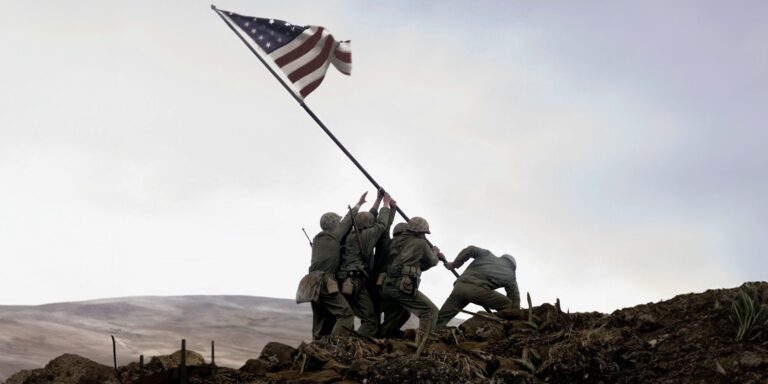Clint Eastwood has been behind a number of the most iconic motion pictures ever made, though one in every of his movies launched almost twenty years in the past by no means fairly obtained the credit score it deserved. Whereas many will acknowledge Eastwood from his performing roles as the legendary Western hero The Man with No Name in Sergio Leone’s {Dollars} Trilogy or because the no-nonsense cop who performs by his personal guidelines in Soiled Harry, Eastwood’s work behind the digital camera was simply as acclaimed. With two Best Picture wins to his title, directorial releases like Unforgiven and Million Greenback Child solidified Eastwood’s standing as a significant filmmaker.
Even after having already made cinematic historical past numerous occasions over, in 2006, Eastwood was nonetheless pushing the boundaries of what he may obtain as a director. With this got here the distinctive problem of releasing two movies in a single yr, every coping with the identical World Struggle II battle from a unique perspective. Whereas the Japanese-centric companion piece Letters from Iwo Jima obtained crucial acclaim and was a hit at the box office, it was his movie exploring the 1945 Battle of Iwo Jima from the American perspective that was a disappointing monetary flop.
Flags Of Our Fathers Was A Higher Film Than Its Field Workplace Would Recommend
Vital Acclaim Did Not Translate To Field Workplace Success
Flags of Our Fathers instructed the story of the 5 Marines and one Navy Corpsman who raised the flag on Iwo Jima. As a strong image of unity and patriotism, this iconic picture is among the most recognizable of the whole Second World Struggle and represents the collective efforts and teamwork of U.S. troops in energetic battle. By showcasing troopers’ journeys by boot camp to the battlefield in addition to the aftereffects on their lives, Eastwood provided a profoundly highly effective perception into the results of battle on these within the coronary heart of it.
As an interesting exploration of heroism, Flags of Our Fathers explored each the earned and manufactured nature of era-defining imagery and stood as an correct and considerate tribute to the lads who fought on the battle of Iwo Jima. Made on a funds of $60 million, audiences didn’t end up for Flags of Our Fathers, and it flopped on the field workplace with a gross of simply $65.9 million. This was an underwhelming disappointment, which definitely didn’t mirror the facility and attraction of Eastwood’s work on the movie.
Why Flags Of Our Fathers Wasn’t A Greater Field Workplace Hit
Flags Of Our Fathers Had To Compete With One other Eastwood Film
Flags of Our Fathers was the primary of two movies launched by Eastwood in 2006 that addressed the Battle of Iwo Jima, which meant he was at risk of splitting his viewers in half. With two motion pictures shot again to again, and Flags of Our Fathers popping out in October earlier than rapidly being adopted by Letters from Iwo Jima, to see how Eastwood addressed the Japanese perspective of WWII was arguably a extra fascinating prospect. Letters from Iwo Jima was additionally produced on a funds of simply $19 million, which means the edge was a lot smaller for it to succeed.
Though produced on a a lot smaller funds, Letters from Iwo Jima truly outgrossed Flags of Our Fathers and took in $68.7 million on the field workplace.
Regardless of receiving crucial acclaim, Flags of Our Fathers additionally suffered from mismatched viewers expectations, as, quite than play out like a conventional battle drama, it was truly a probing character drama that delved into the psychological complexities of the flag-raisers within the aftermath of the battle. The cruel reality was that Letters from Iwo Jima finally overshadowed Flags of Our Fathers, as Eastwood releasing a film largely in Japanese provided viewers one thing they’d by no means seen from the filmmaker earlier than. Whereas Flags of Our Fathers by no means obtained the due it deserved, the easiest way to take pleasure in these motion pictures is collectively.
Supply: All field workplace figures from Box Office Mojo.

